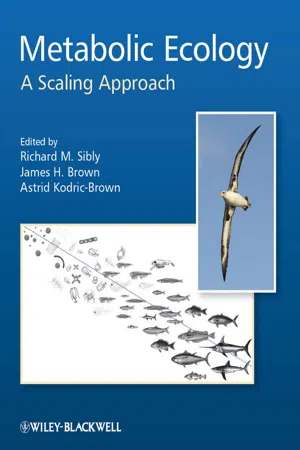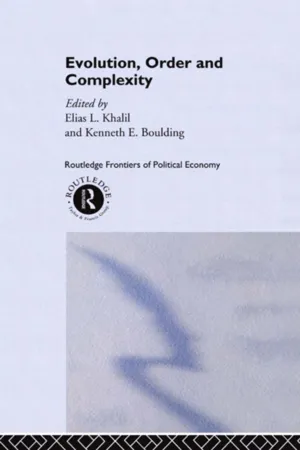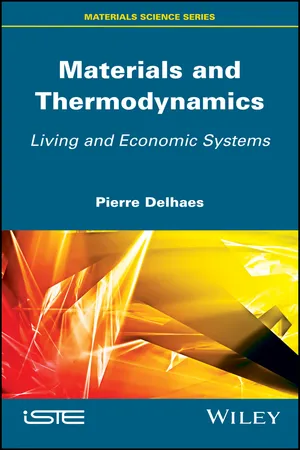Biological Sciences
Biological Organisms
Biological organisms are living entities that possess the characteristics of life, including growth, reproduction, and response to stimuli. They are composed of cells, which are the basic structural and functional units of life. Biological organisms can range from single-celled microorganisms to complex multicellular organisms, and they play a fundamental role in ecological systems and the functioning of the biosphere.
Written by Perlego with AI-assistance
Related key terms
4 Key excerpts on "Biological Organisms"
- eBook - ePub
Where Wisdom May Be Found
The Eternal Purpose of Christian Higher Education
- Edward P. Meadors(Author)
- 2019(Publication Date)
- Pickwick Publications(Publisher)
Biologists build bridges among careers in academia, industry, and research, and they study a wide gamut of topics from agriculture to medicine to ecosystems and beyond. Many Christians have found exciting and rewarding careers as biologists engaged in ground breaking research that sheds new light on the mysteries and intricacies of God’s creation. James Houston reminds us that “the wisdom of Christ is not know-how by which to gain mastery of the world. It is obedience: to do the will of God in justice and the fear of the Lord. It is the moral exercise of relationships with God and man” (See 1 Cor 1 : 27, 29 – 30). 161 Indeed, we are called to be game changers and to transfer knowledge about God’s world into life changing service. Life Is Complex Life is very complex even in the simplest of single celled organisms, multicellular organisms, and in networks of living organisms. Single celled organisms are complex in that they can do many of the functions that some organisms require many cells to complete. Each cell in a multicellular organism is alive and sophisticated and yet contributes to the overall functions of an organism. The human body is a cohesive and effective whole with interdependencies among its parts just as we see the coordinated and interdependent functions among the parts of all creation. All of the tissues in mammals, for instance, are dependent upon the delivery of oxygen to their cells by blood which is a part of complex circulatory systems. So it goes with the many parts of the human body where intellect, digestion, nerve responses, reproduction, and many other functions occur. There is an interdependency of the systems in the organism which is essential to its life. Ecosystems offer complex examples of interdependency of organisms, although the ecosystem is not alive per se as are organisms. Each living organism in an ecosystem plays a role in the success of the ecosystem - eBook - ePub
Metabolic Ecology
A Scaling Approach
- Richard M. Sibly, James H. Brown, Astrid Kodric-Brown, Richard M. Sibly, James H. Brown, Astrid Kodric-Brown(Authors)
- 2012(Publication Date)
- Wiley-Blackwell(Publisher)
Part II Selected Organisms and Topics Chapter 12 Microorganisms Jordan G. OkieSUMMARY12.1 INTRODUCTION1 The biological activity and diversity of prokaryotes and unicellular eukaryotes is extraordinary.2 The metabolic ecology of these microorganisms is governed by five fundamental physical and biological dimensions of life: (a) thermodynamics; (b) chemical kinetics; (c) physiological harshness and environmental stress; (d) cell size; and (e) levels of biological organization, including host–endosymbiont mutualisms, consortia, biofilms, multicellular prokaryotes, and multi-domain superorganism complexes.3 The metabolism and chemical kinetics of the higher levels of biological organization emerge from the complex interactions of the energetics of the individuals and their biochemical reactions.4 Identifying shifts in metabolic scaling across major transitions in ecological and evolutionary organization can elucidate some of the most fundamental features of bioenergetics that shaped the early evolution of life and shape the ecology of microorganisms today.Microscopic organisms are of macroscopic importance. Microorganisms are everywhere. They make up a majority of the biomass on Earth. Prokaryotes alone have an estimated abundance of 4–5 × 1030 cells, a global carbon mass 60–100% that of plants, and global nitrogen and phosphorus masses about 10-fold more than plants (Whitman et al. 1998). The metabolic activities of microorganisms have crucial roles in local and global biogeochemical cycles. Our food industry, biotechnology, medicine, agriculture, and health rely on the biological activities of microbes.The majority of explicit research in ecological theory has been conducted on macroorganisms. In several respects, however, microorganisms harbor the greatest biological diversity – in biochemistry, in phylogeny, in habitat, in metabolic lifestyle, in resource use, and in range of body size. Thus the greatest challenges and most promising advances for ecological theory arguably lie in its applications and extensions to understanding the ecology of bacteria, archaea, and microbial eukaryotes. - eBook - ePub
- Kenneth Boulding, Elias Khalil(Authors)
- 2002(Publication Date)
- Routledge(Publisher)
Advances in evolutionary mechanisms allow Metaman to evolve more rapidly and effectively than any entity ever has before. Their power is so great, in fact, that many biologists hesitate to accept the progress of Metaman as “biological evolution” at all. They reserve the notion for the comparatively feeble way that random mutation and selection is able to operate on biological species. However, this narrow view overlooks the clear connection between civilization and the natural world.To understand the enormous biological significance of the complex of man, machine, and domesticated plants and animals that is modern civilization we must step back and survey the broad sweep of evolution from life’s first beginnings to its present. The most fundamental change, of course, is the appearance of ever more complex forms of life. Bacteria, which evolved early in our planet’s history, are simple compared to more recent arrivals. Even the most primitive jellyfish is undeniably more complex than ancient single-celled creatures. This is obvious, but the way complexity has evolved is interesting. It has advanced in abrupt steps in which existing organisms have joined with one another to create larger, composite creatures. Thus, the living world is a hierarchy of levels of complexity, and organisms at each level are not only more complex than ones below, they are actually composed of simpler living forms.Major transitions to new levels of organization have been exceedingly rare: Only four are known since life’s beginnings on the planet. The first was the tight association of biochemicals into bacterial cells some 3.6 billion years ago when the non-living at its most complex gave rise to life at its simplest.21 Next, simple prokaryotes fused symbiotically into the compound eukaryotic cell, some 1.5 billion years ago.22 Seven hundred million years ago clusters of these higher cells united into multi-cellular organisms.23 - eBook - ePub
- Pierre Delhaes(Author)
- 2017(Publication Date)
- Wiley-ISTE(Publisher)
9 Extensions to Living Organisms and Ecology Non-equilibrium thermodynamics have allowed us to describe the varied responses of materials in physicochemical systems and extend them to living environments. New biological functions emerging from dynamic interactions between molecules and macromolecules have been observed at the cellular level; we will generalize these behaviors. In Chapter 8, we introduced a hierarchical description of these media based on biochemistry and ending with eukaryotic cells. We will continue this review by extending it to organs and individuals, mainly in mammals and humans, by introducing the notion of physiology. For this, we will introduce the concept of the internal clock, which regulates the life of animals and man [KIN 14]. Then, the extension to ecological systems is a natural progression. In doing so, we will show the behavioral analogies encountered in populations of individuals but also the difficulty of understanding, in thermodynamic terms, these more collective dynamic phenomena in living units such as ecosystems or in the Earth’s natural cycles. In this approach, in addition to the oscillatory temporal aspect, which is extended to the development of a chaotic situation, we also describe the appearance of spatiotemporal patterns. Thus, within the framework of the Turing model, recent advances in the formation of spatial biological structures will be discussed. 9.1. Behavior of cells and organs For this, the analysis must evolve from the general definition based on the reservoir–system–observer trilogy (see Figure 2.1). By modeling them together, it is necessary to take into account the content of an open system, its hierarchy in subsystems, but also the concrete definition of the boundaries or selective walls that control the nature of exchanges with the environment
Learn about this page
Index pages curate the most relevant extracts from our library of academic textbooks. They’ve been created using an in-house natural language model (NLM), each adding context and meaning to key research topics.



